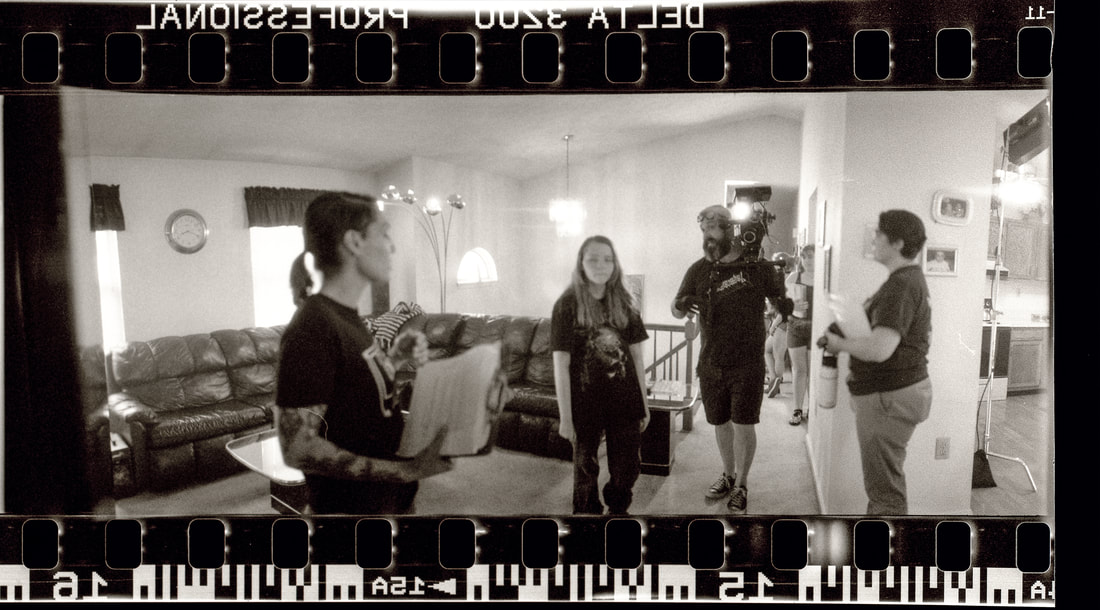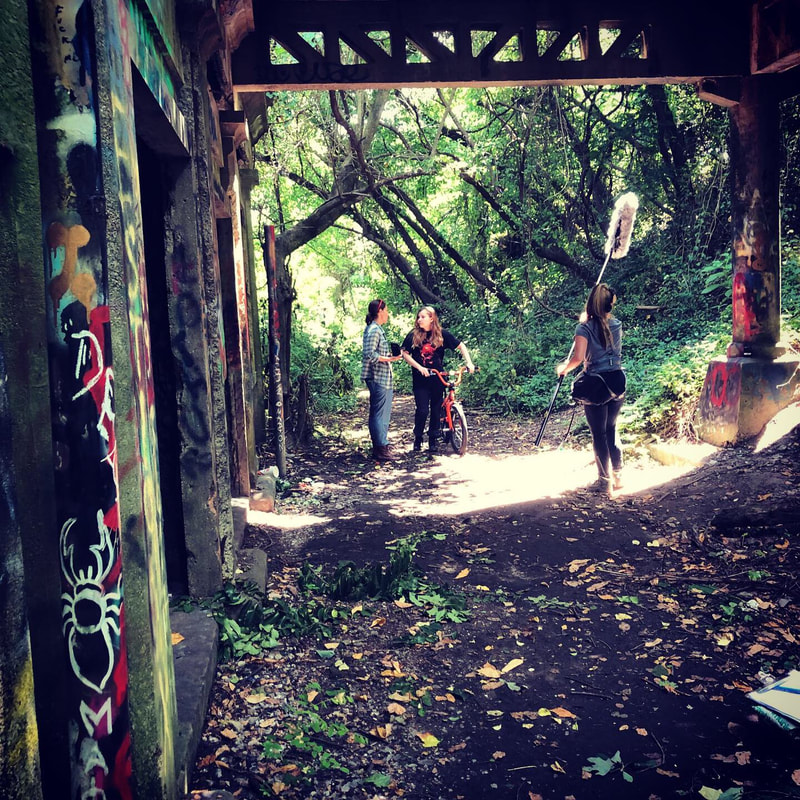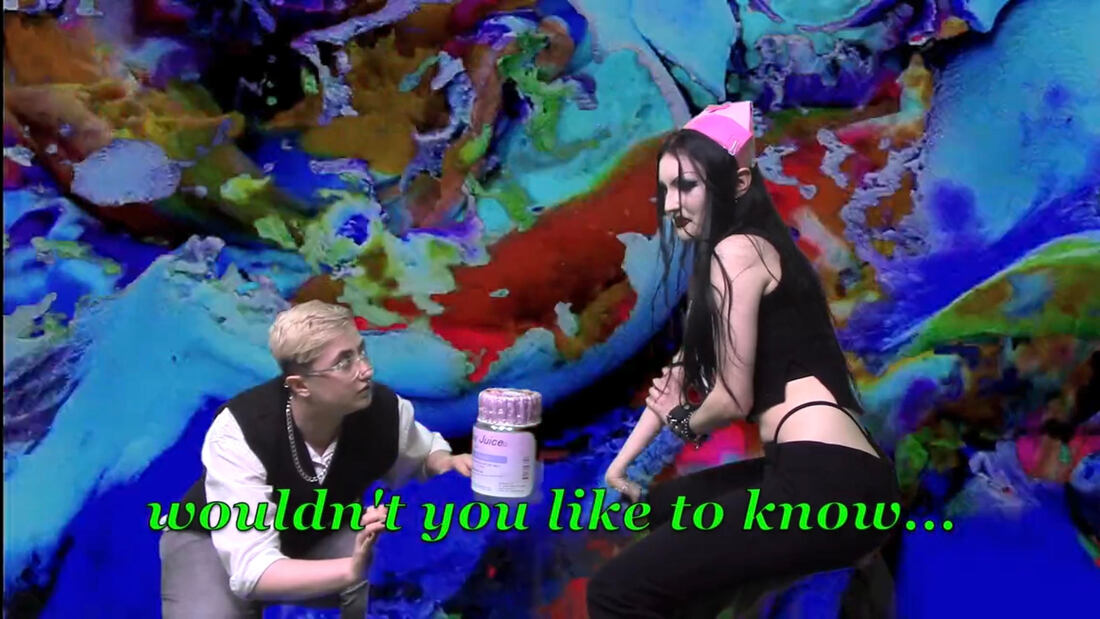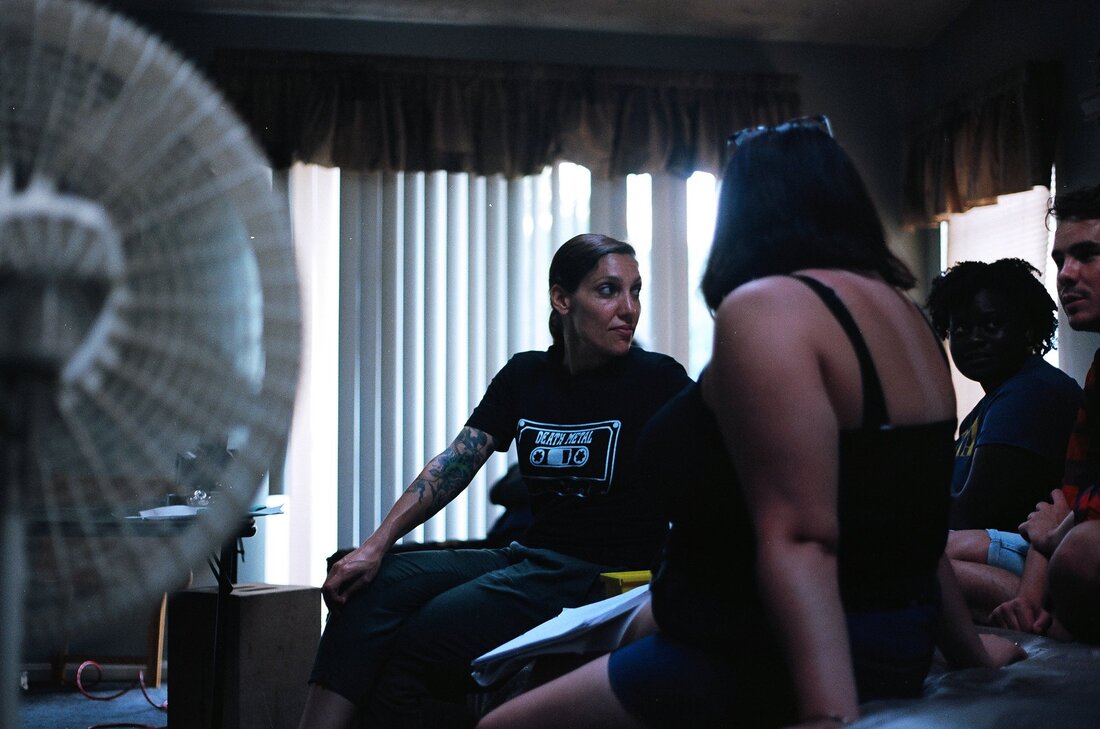|
Beneath the Remains is a coming-of-age mystery about a teenage metalhead and her search for her older sister, who has disappeared in the humid summer of their marshland home.
Dina Fiasconaro is a Baltimore screenwriter and director. Her early work was influenced by her immigrant family’s stories, and her current projects continue to center female characters and explore thematic threads related to psychology, gender roles and marginalization within the context of family dynamics. Dina was a finalist for the 2019 and 2018 Baker Artist Award and her films have screened at a variety of national and international venues and film festivals, including the Baltimore Museum of Art. Dina has honed her work at MacDowell, Dorland Mountain Arts Colony Residency, Stowe Story Labs, Saul Zaentz Innovation Lab and GrrlHaus Cinema Seminar. She has an M.F.A. in Directing from Columbia University, and a B.S. in T.V., Radio and Film from Syracuse University. She is a Professor of Film and Moving Image at Stevenson University, a member of Film Fatales, and founder of the Baltimore Women’s Media Alliance, working towards gender parity in the film industry. Insta: @beneaththeremainsmovie Twitter:@BeneathRemains FB:/beneaththeremainsmovie BENEATH THE REMAINS from Dina Fiasconaro on Vimeo.
1. What was your inspiration for your film? I know that the idea was based on a short story. How close was the film to the novella?
This film is one sequence from the longer novella written by my friend, Terence Hannum (which I also have in development as a feature film). In reading the novella, I felt an immediate connection to the main character and themes of isolation, stillness, otherness, marginalization and frustration. Parts of me, also that age in the 1990s, were very much Gabby (the main character). One of the first things I did when optioning the novella was to get permission from Terence to change the gender of the two main characters from male to female, so the original sequence from the novella was a male character getting a haircut from his friend’s older sister. Since one of my missions as a female director is to tell women’s stories, I thought it would be an interesting “experiment” to swap genders and see how the story still worked. I was pleased that doing so helped to shatter certain stereotypes, like women riding BMX bikes or being into metal music. It’s rare to see female teen metalheads at the center of any film (except Malmhaus, which was an inspiration for the film), and I was interested in exploring the music, rituals and community from a female perspective.
2. There’s a feeling of uncertainty throughout the film. As a viewer we are left waiting for something to happen or some clue to where the missing girl is. But yet it’s never resolved. This isn’t the beginning of the story, or the end, or the climax. It’s almost an in-between state where the main character is having inner growth on where to move and evolve and move next. There are no adults (or parents) in the film and the two other characters don’t seem to be that worried of the girl's disappearance. Was this intentional to have a feeling of no resolution and uncertainty?
Yes, the lack of resolution was very intentional. This short essentially functions as a concept short for the feature version, so I wanted to take a portion of the story that could be left open-ended, without a distinct resolution, and with room for character and story development beyond these 11 minutes. These characters are young women floating through a liminal space of teenhood, trying to make sense of the world without much oversight or direction (hence the lack of adult characters), and here, we meet Gabby mid-story as she takes a break from the search for her missing sister and finds solace with her friend’s older sister, who becomes a fleeting substitute for her own. This sequence gives us a glimpse into Gabby’s headspace; she doesn’t say much, but she is processing a lot, and there is a lot of subtext in her interaction with Jessica (her friend’s older sister). I’m attracted to other films like this, ones that don’t bang you over the head with exposition or on-the-nose dialogue. Audiences are smart and can piece together the information themselves. It’s satisfying (to me) for an audience to leave a film with questions lingering, as long as they aren’t completely lost or confused. I know that this can be frustrating for certain viewers since the common expectation is beginning, middle, end (which the feature version does a better job of), but I was willing to take that risk in favor of overall tone, mood and setting.
3. One of the first things I noticed about your film was the pink sky. Especially the pink sky in contrast to the neutral, natural tones of the environment. How did you decide on the coloring of the film and reason behind the pink/red sky overtones?
The colored sky was 100% influenced by the film Mandy. I wanted to add a feeling of otherworldliness, that perhaps there are supernatural forces at play here. The sky intentionally moves from light pink to dark purple, not only to show passage of time, but to track Gabby’s emotional arc throughout the film, as she is revitalized in her pursuit of her missing sister. This is juxtaposed to the muted, earthy color palette – greens, browns and of course, black. This world is decaying, depressing and relentless, but also full of vitality and perseverance.
4. Music (metal) plays a big part in setting the stage for the feel of the film. Can you describe the connection to music and importance to the story?
Author Terence Hannum is also a musician, known for his noise-metal band, Locrian, which is described as an "eclectic mixture of black metal, electronics, drone, and noise rock" and “dystopic and apocalyptic.” Terence’s music and writing coalesce seamlessly in the novella, and metal was infused into the characters and environment. Gabby and her friends would most certainly listen to Locrian “in real life”, and metal music is what they use to define themselves and make sense of the world with as alienated, isolated young women in the 90s. Since headbanging is a symbolic and ritualistic aspect of metalhead culture, I also hyper-focused on those moments in the story centered around Gabby’s hair/haircut, fortified by the soundtrack from Brooklyn metal band Thurn & Taxis.
5. What’s next for you? Are you working on any new projects?
Yes! I have two features in development – this story and another dramatic feature film. I am basically just waiting for some money to fall from the sky so that we can move into pre-production on one or both. I was also invited to MacDowell for a writing residency in February, where I will research and develop a new feature narrative script. So – I’m writing a lot and will hopefully be able to direct one or more in the future at some point, once the stars align for me!
Dina's playlist for Beneath The Remains:
|
Tips and Picks from our collective members and featured artists!
Hand-picked short films and interviews with filmmakers. Free streaming (for a limited time) and 5 questions answered by the filmmakers. Contributers
All
|



